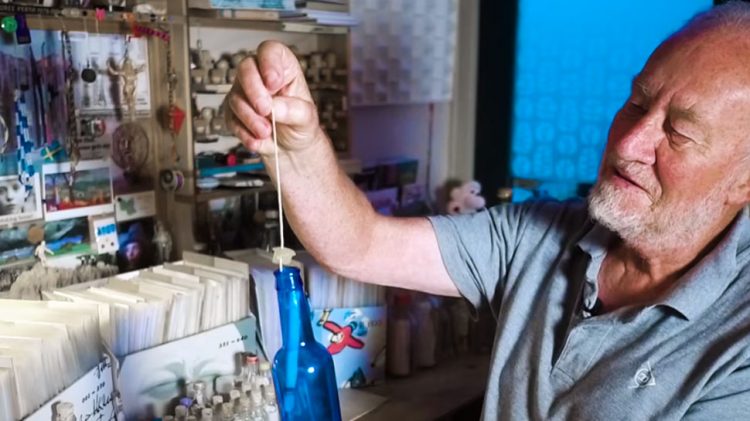Dutch beachcomber Wim Kruiswijk has amassed a collection of 1200 messages-in-bottles over the course of 34 years and has responded to almost all of them.
68-year-old Kruiswijk says that his unusual hobby began in 1983 when he found three bottles on his local beach, each containing letters and return addresses. He wrote to all three addresses and was surprised to receive responses from each one. It was this experience which sparked his interest in hunting and collecting messages in bottles, and he hasn’t stopped looking for them since.

Photo: Great Big Story video screengrab
“I find my messages in bottles on the beach of Zandvoort, where I live, and on the Dutch Islands,” Kruiswijk recently told Great Big Story. “Messages in bottles is slow mail. It takes you days, or weeks, or months to find a bottle.”
In the early years, Kruiswijk would find as many as 50 bottles a year, but since 2000 that has slowed to around 20-30 finds, mainly due to beach cleaning efforts. He believes that the rise of the internet has also played a role in the diminishing number of messages in bottles, telling Dutch news site PZC, “I used to get a response at half the bottle messages that I answered. Now that’s less; many people want ‘instant satisfaction.”’
Kruiswijk is a retired bookkeeper, and it shows in his approach to minding his collection. The bottled messages, all 1,200 of them, are kept neatly sealed and filed in plastic folders. He only holds onto the unique bottles or packaging that wash up, such as lovely ornamental bottles or test tubes.
Throwing a message in a bottle out into the seas a longstanding human tradition dating back to the time of the Greek philosopher Theophrastus, circa 310 B.C., who used the bottles to study water currents. Scientists still apply the method to this day, as a means to help researchers develop ocean circulation maps, and to crowdsource scientific studies of ocean currents.
In the past bottles have also been used to send distress messages from stranded sailors. They also have been used for memorial tributes, or to send loved ones’ ashes on a final journey. One of the more common uses though is just to send invitations out to prospective pen pals, a quaint notion in these modern times, but, as Kruiswijk so clearly demonstrates, an effective one.






